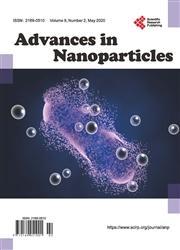Synthesis of Niobium Doped ZnO Nanoparticles by Electrochemical Method: Characterization, Photodegradation of Indigo Carmine Dye and Antibacterial Study
引用次数: 23
Abstract
Niobium doped Zincoxide nanoparticles has been synthesized through electrochemical method and characterized by UV-Visible spectroscopy, IR Spectroscopy, SEM, XRD, ICPMS and EDAX data. The UV-Visible spectroscopy result reveals that the band gap energy of ZnO/Nb2O5 nanoparticles to be 3.8 eV. The XRD results show that the crystallite size is to be 31.9 nm. The ICPMS data indicate the presence of 3,3461,328 counts of 93 Nb and 577,906,390 counts of 66 Zn. An improvement in the photocatalytic degradation of Indigocarmine dye (IC) in comparison to commercially available pure ZnO was observed. The photodegradation efficiency for ZnO/Nb2O5 and ZnO were found to be 97.4% and 52.1% respectively. The enhancement in photocatalytic activity of ZnO/ Nb2O5 was ascribed to the extended light absorption range and suppression of electron hole pair recombination upon Nb loading. The antibacterial activity of ZnO/Nb2O5 nanoparticles was investigated. These particles were shown to have an effective bactericide.铌掺杂ZnO纳米颗粒的电化学合成:表征、靛蓝胭脂红染料的光降解及抗菌研究
采用电化学方法合成了掺杂铌的氧化锌纳米颗粒,并通过紫外可见光谱、红外光谱、SEM、XRD、ICPMS和EDAX数据对其进行了表征。紫外可见光谱结果表明,ZnO/Nb2O5纳米颗粒的能带能为3.8 eV。XRD结果表明,该材料的晶粒尺寸为31.9 nm。ICPMS数据显示93 Nb有3,3461,328个,66 Zn有577,906,390个。与市售的纯氧化锌相比,光催化降解靛蓝染料(IC)的效果有所改善。对ZnO/Nb2O5和ZnO的光降解效率分别为97.4%和52.1%。ZnO/ Nb2O5光催化活性的增强主要是由于ZnO/ Nb2O5负载Nb后光吸收范围的扩大和电子空穴对复合的抑制。研究了ZnO/Nb2O5纳米颗粒的抗菌活性。这些颗粒被证明具有有效的杀菌剂。
本文章由计算机程序翻译,如有差异,请以英文原文为准。
求助全文
约1分钟内获得全文
求助全文

 求助内容:
求助内容: 应助结果提醒方式:
应助结果提醒方式:


